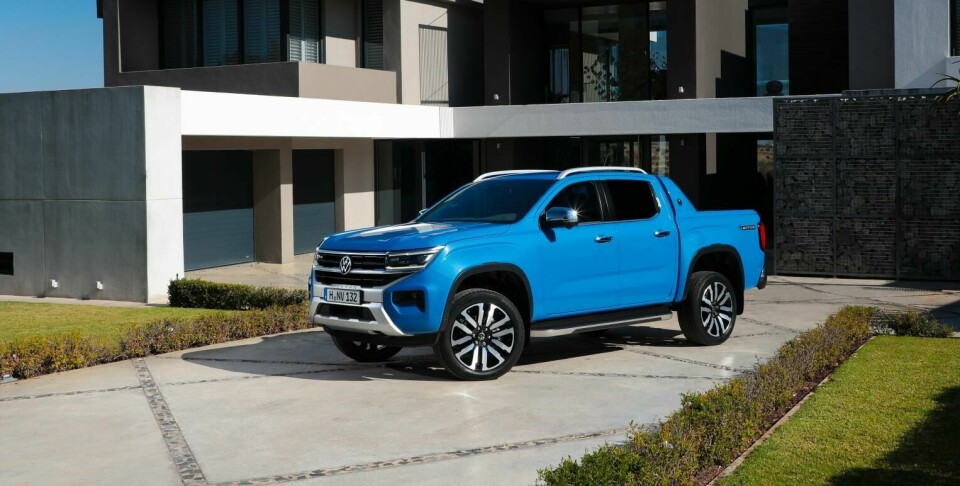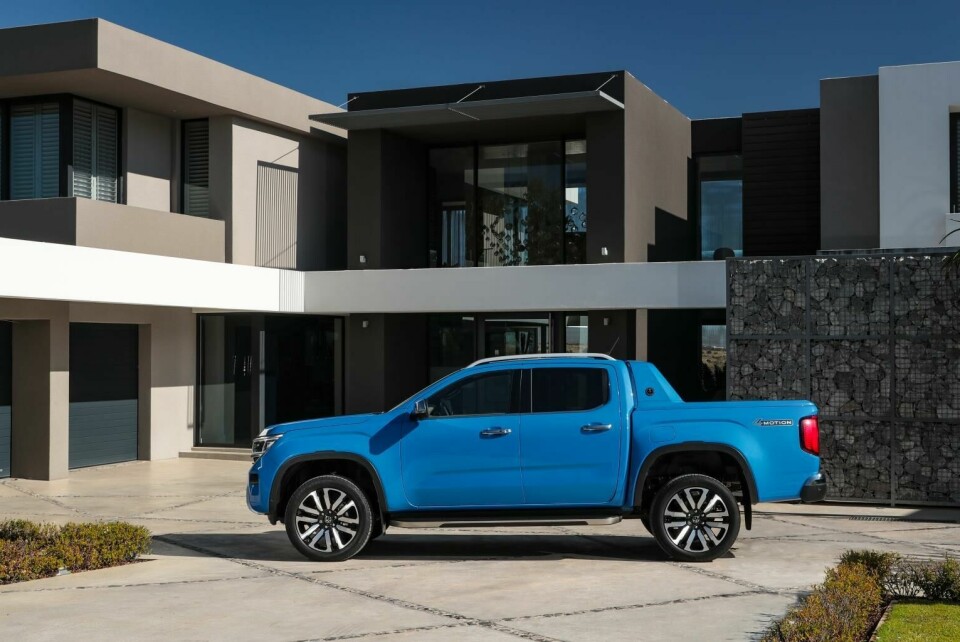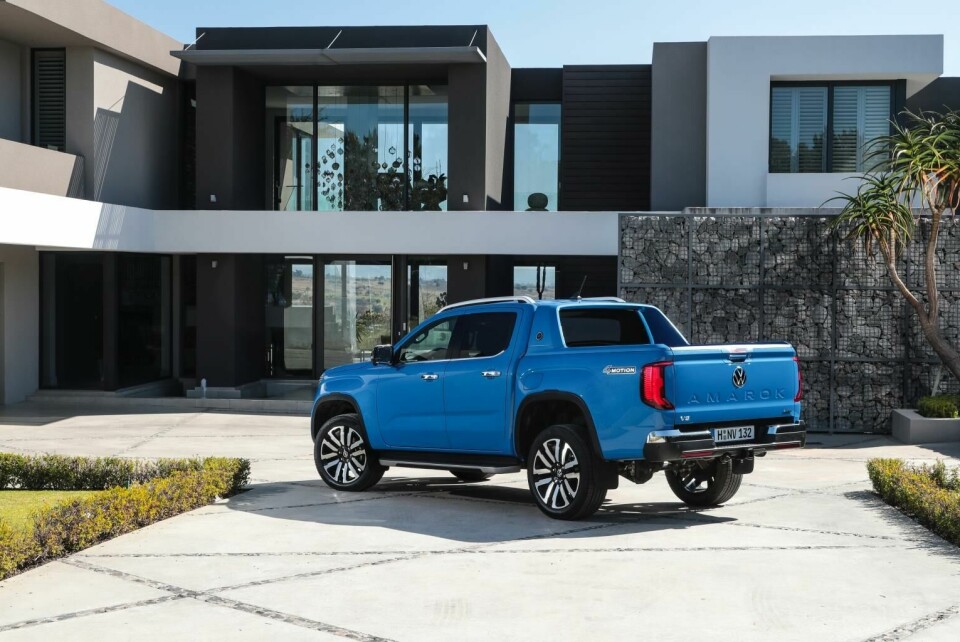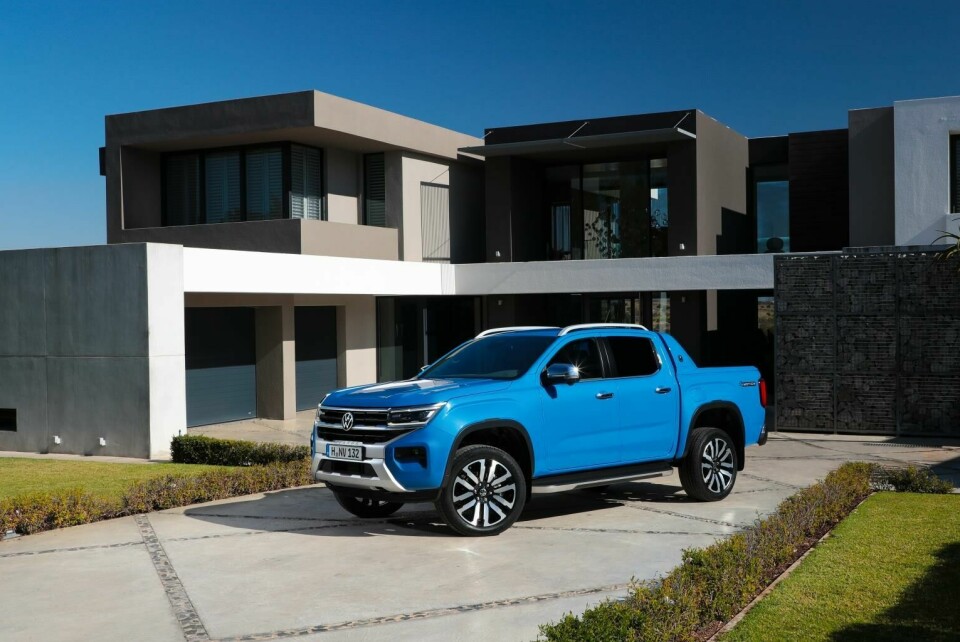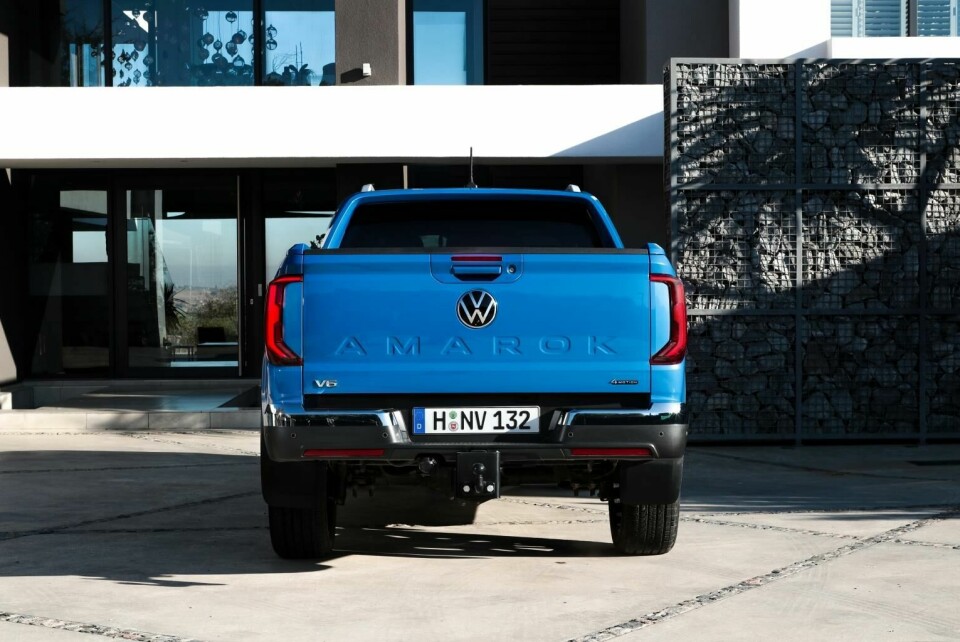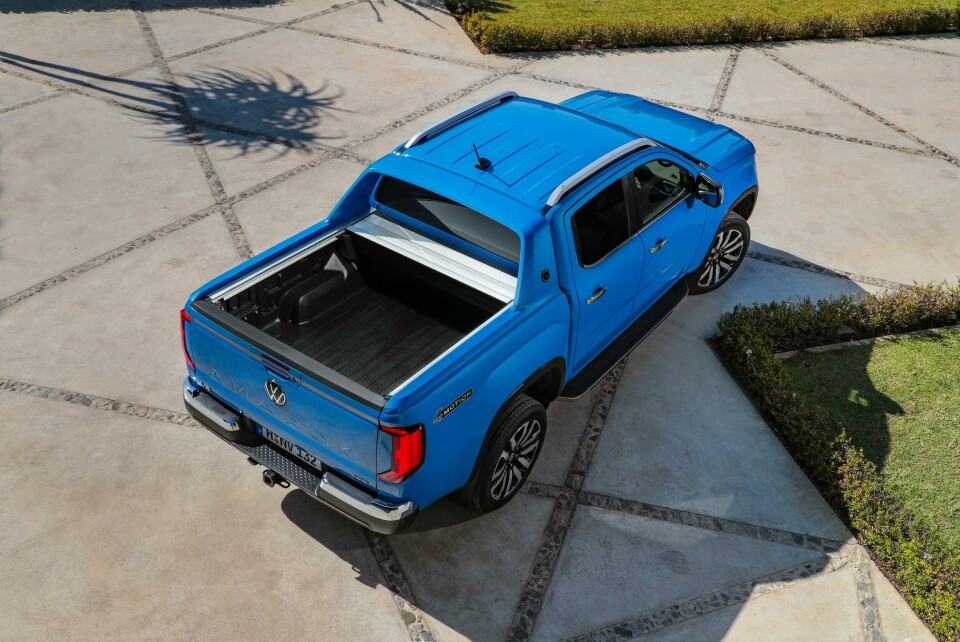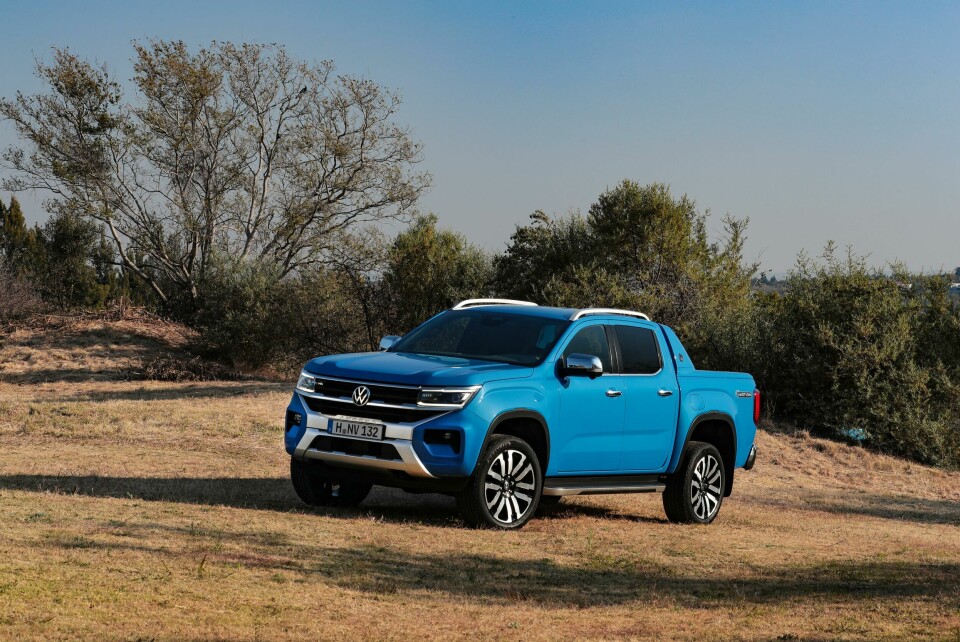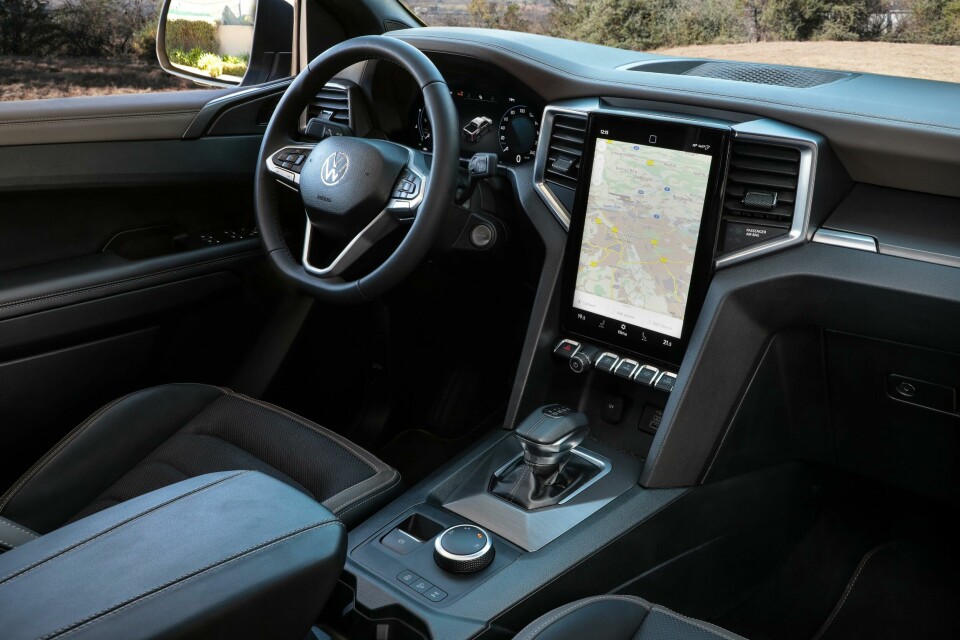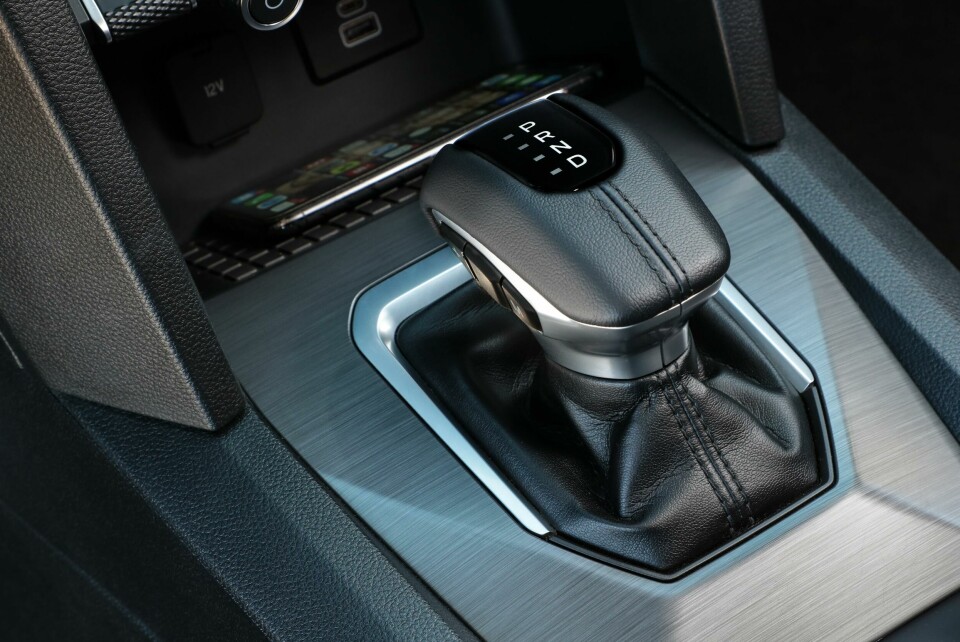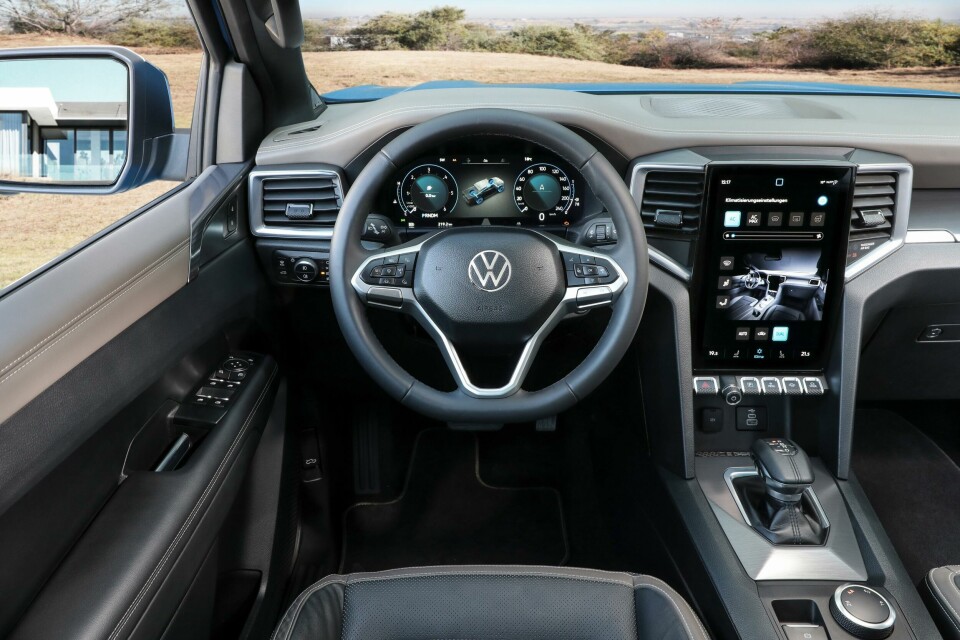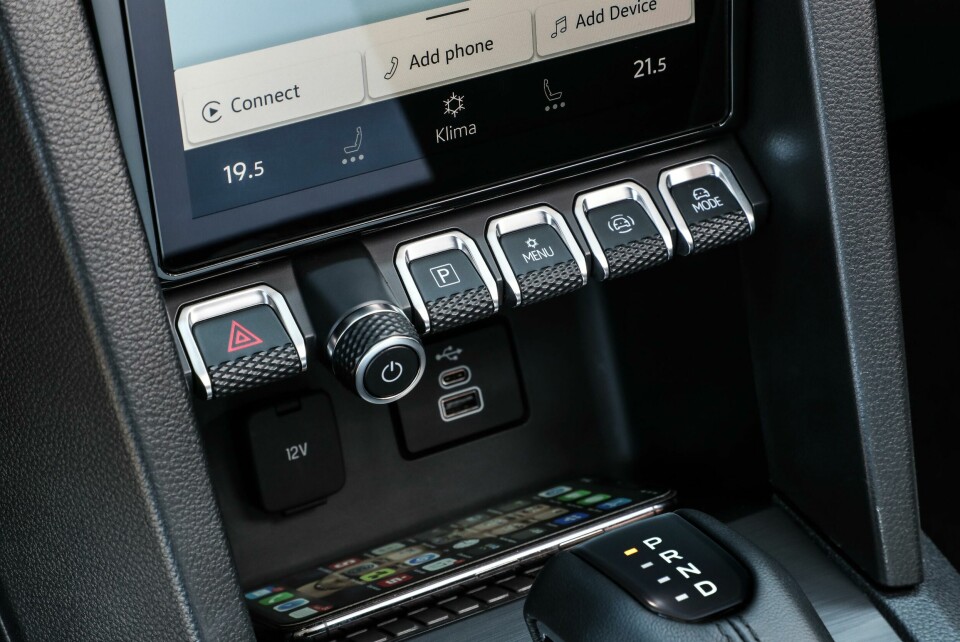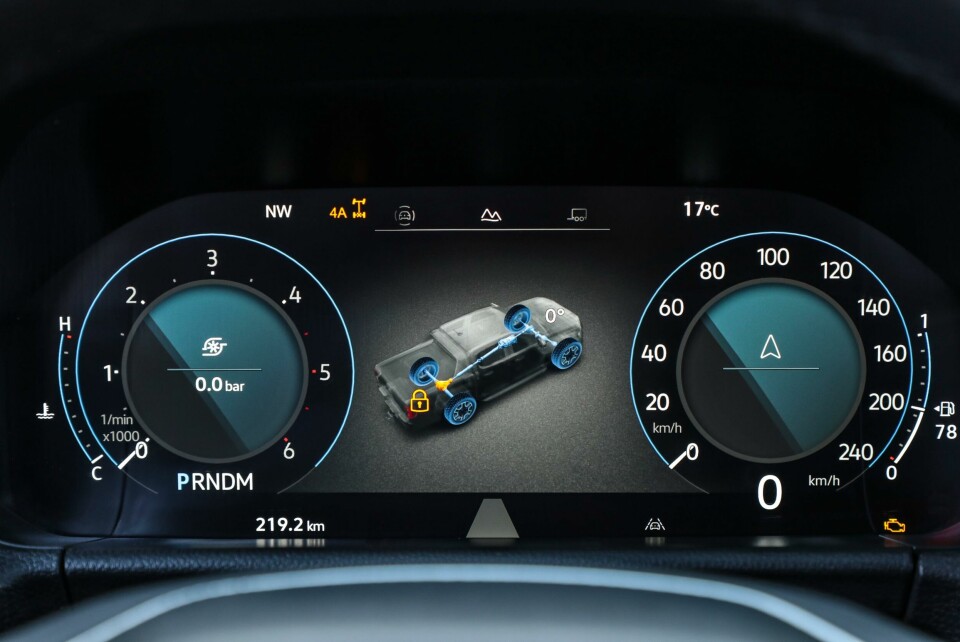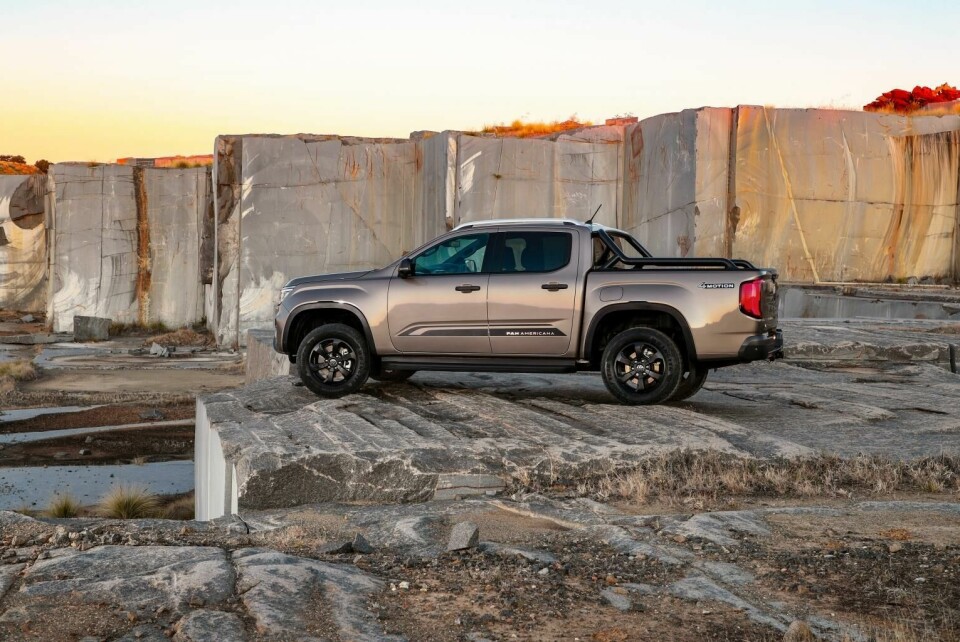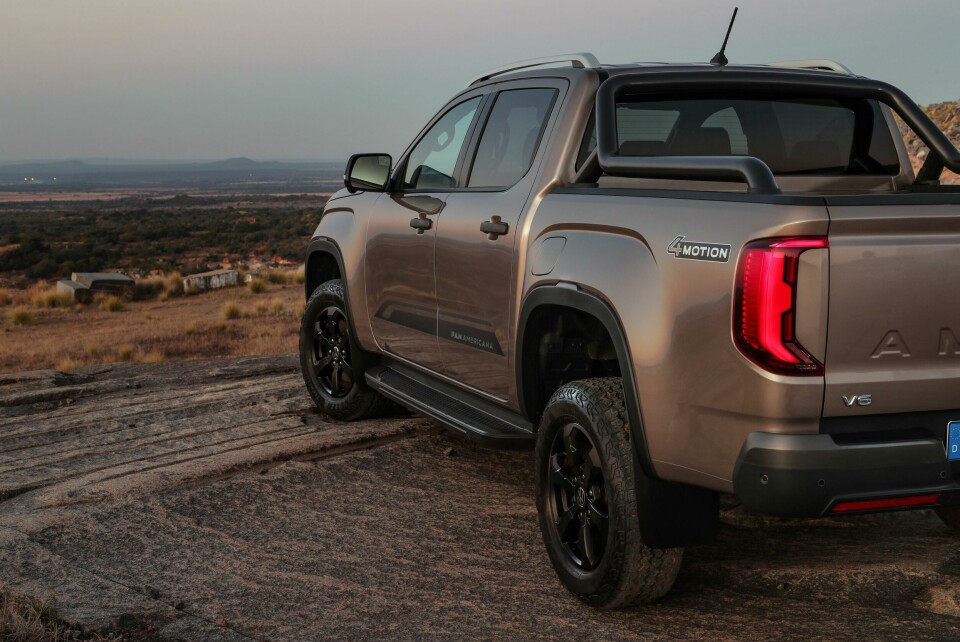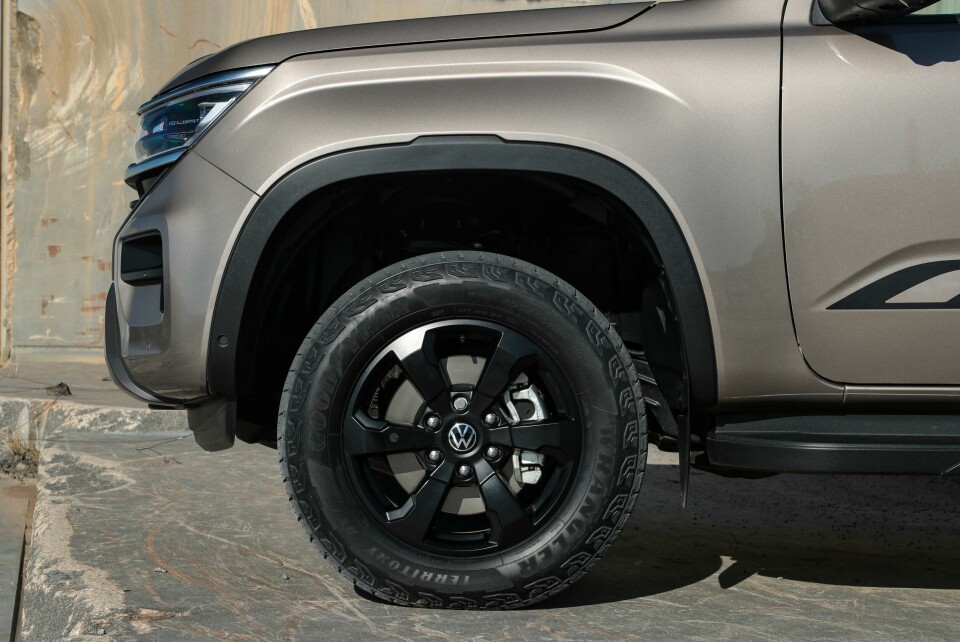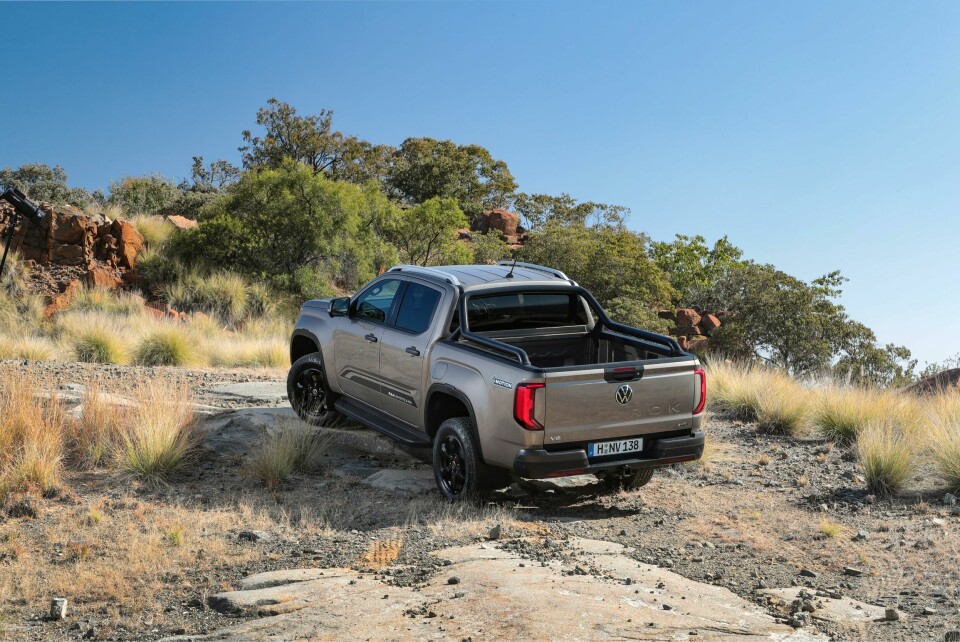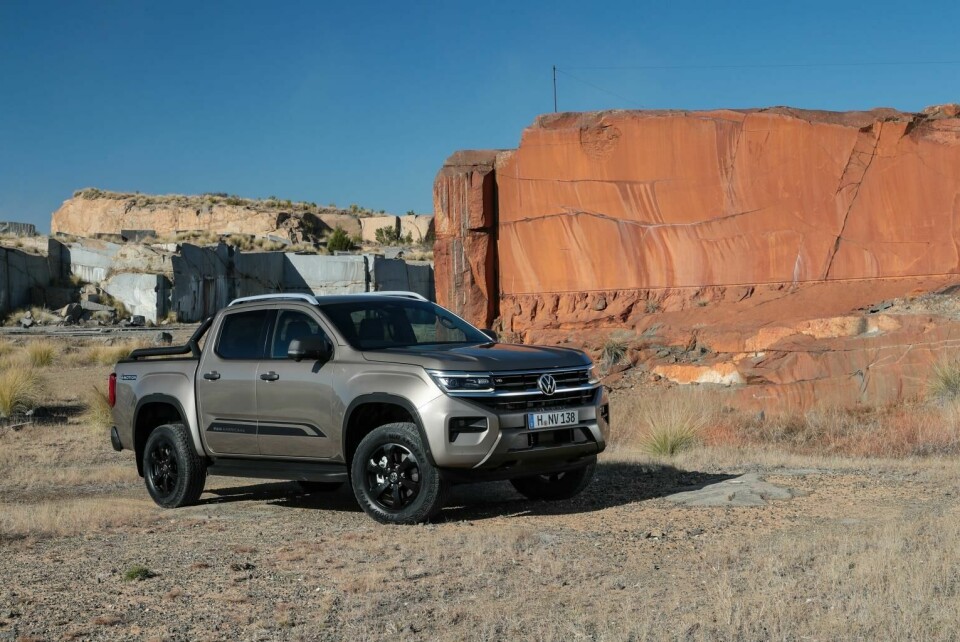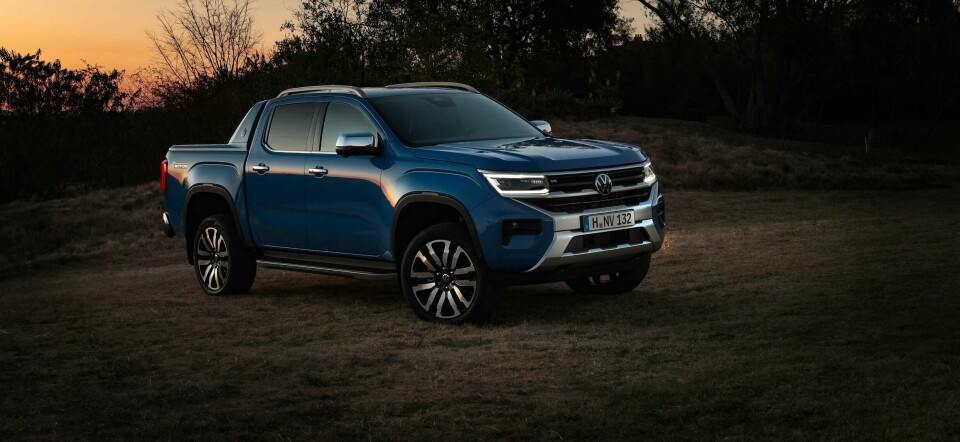
Volkswagen’s new pick-up strikes a muscular pose
Volkswagen says its rugged new Amarok is designed for “no matter what”. Muscular arches and an aggressive new look certainly give that impression, and Car Design News caught up with its design lead to find out more
The Amarok is a big deal for Volkswagen. Last year, about 830,000 units of the rugged off-road pick-up were sold globally. Now, a completely revamped second-generation version has been launched, and the automaker is keen to highlight that it’s more than just a facelift. “Everything is new,” according to the OEM.
The Amarok is sold through Volkswagen’s commercial vehicles division and that should give a fair indication as to the design brief. It is ultimately built for getting stuff done. It can carry payloads of up to 1.16 tonnes in the rear cargo box, for example, which is shaped in a way that allows pallets to be loaded side-by-side. It can drive through reasonably deep stretches of water, with a fording depth increased from 500mm to 800mm. Then there is its ten-speed automatic transmission and all-wheel drive system, which can “master any terrain” and support a towing capacity of up to 3.5 tonnes.
Volkswagen ultimately describes the new Amarok as being capable for “no matter what.”
At this point, none of that really screams “design” and suggests aesthetics have had to yield to the demands of engineering. But this is more than just a workhorse in Volkswagen’s eyes. Like any pick-up, it is seen as a lifestyle vehicle (there’s a reason the Ford F-150 has long been America’s favourite car) and has been designed as such. Ignore the gaping wheel arches and utilitarian storage bed and it is arguably a handsome looking thing. There is nothing ground-breaking – a pick-up is a pick-up after all – but so-called “charismatic” design decisions help to create a modern, athletic package.
Heavily flared wheel arches dominate the overall look, bolstered by an aggressive X-shaped front grille and frowning LED headlights. Raised feature lines on the hood combine for a sporty, wide-body feel that’s marketed as “powerful contours”. At the rear, boomerang taillights decorate an otherwise restrained rear mask. In a pleasing turn of events, the production model closely resembles sketches released earlier in 2022, and is remarkably similar to the Atlas Tanoak concept shown in 2018.
The new Amarok does not hide its heritage, while simultaneously showing a newly interpreted DNA of Volkswagen Commercial Vehicles
”We transferred the distinctive, rectangular wheel arches of the first Amarok into the new generation, but we used a more integrated execution. In the new model, the wheel arches blend into the body side and you can see how the pronounced corners connect and flow,” Gu-Han Kim, head of Volkswagen Commercial Vehicles’ Melbourne design studio, told Car Design News.
”The undercut feature enhances the width of the wheel arches and contributes to the great stance of our new Amarok,” he continues. ”I also want to highlight the design edge, running from the C-pillar over all the rail and straight into the front. The new Amarok references the first generation and does not hide its heritage, while simultaneously showing a newly interpreted DNA of Volkswagen Commercial Vehicles.”
Two versions are available: one which favours off-roading and adventure, while the other pairs “power with elegance” in Volkswagen’s words. (Read: fancy wheels and chrome accents.)
While the rear is understated, it is in fact one of Kim’s favourite features of the new Amarok, describing it is an ”absolute highlight” and, with a nod to the truck’s performance, adds it will “always be in front of you.” The new Amarok’s rear “appears even broader, more expanded” thanks to its embossed nameplate, colour-matched panels and LEDs at each corner of the tailgate.
Inside, things are geared toward comfort and productivity. Volkswagen’s digital cockpit is paired with physical buttons and switches, a pleasing layout for those who are frustrated with all functions consolidated in a touchscreen. Infotainment volume, for example, gets a physical dial, while the all-wheel drive system settings are adjusted with buttons, offered in aluminium depending on the trim level. Premium audio and ergonomic seating – upholstered in either ArtVelours covers (found on other models like the T-Roc) or high-quality leather – complete a well-specced interior for what is primarily a workhorse.
“Through the décor elements and high quality materials, like the smooth leather on the steering wheel or fine chrome application on the buttons, the customer can experience our premium look and feel,” emphasises Kim.
Its high front end shows a strong character, and even more so with the x-wing design
The pick-up segment is one of the few to buck current trends around aerodynamics. Even the new breed of battery electric pick-up carries a familiar silhouette – think Rivian’s R1T, Ford’s F-150 Lightning and Ram’s forthcoming 1500 EV. With the new Amarok, work has clearly been done to smooth out certain lines, and a longer wheelbase helps to temper its tall ride height. But a boxy, flat face remains, a look that very few vehicles tend to carry in today’s environment. Car Design News recently examined the ever expanding universe of the pick-up truck.
”The high and upright front with the expressive bonnet design, along with elements like the integrated skid plate and robust wheel arch moldings, clearly define the Amarok’s rugged appearance,” observes Kim. “Its high front end shows a strong character, and even more so with the x-wing design.”
Even full-size SUVs are being smoothed and rounded, nurturing the coupe-on-stilts aesthetic. Pick-ups in general have always bucked the trend on this front and are yet to fall victim to heavily streamlined body shapes. An imposing front end is part of the pick-up DNA, and it is satisfying to see the trend continue unabated.
